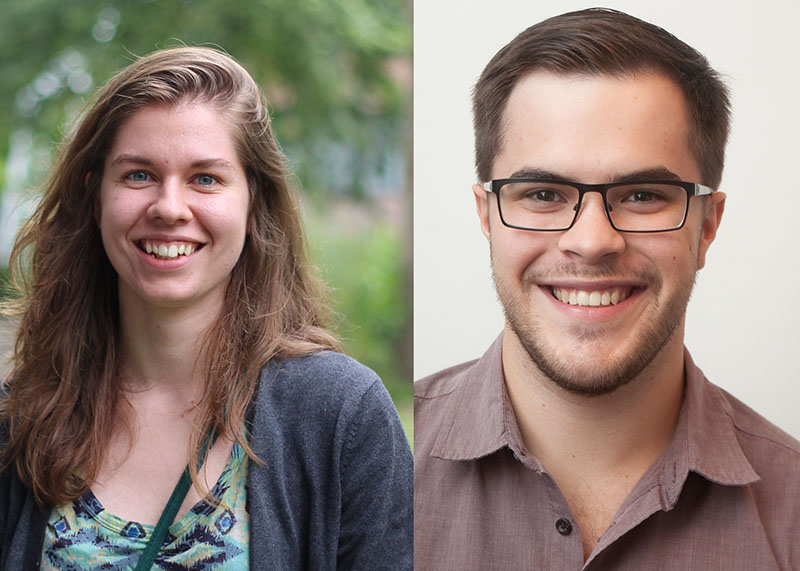
U of S astronomy graduates’ research is out of this world
Hope Boyce (BSC’16) and Taylor Bell (BSC’16) have spent many evenings on the Physics Building rooftop observatory expanding their knowledge of, and passion for, astronomy.
By Lindsay RoyaleBut these U of S alumni have more in common than simply their love of stargazing. Boyce and Bell completed Bachelor of Science degrees in physics in Saskatoon and have gone on to study in the astronomy Master’s program at McGill University. Recently, Boyce and Bell each published a research article in The Astrophysical Journal, a world-renowned research journal devoted to recent developments, discoveries, and theories in astronomy and astrophysics.
Boyce’s article, “An Upper Limit on the Mass of a Central Black Hole in the Large Magellanic Cloud from the Stellar Rotation Field,” is a continuation of research she began as an astronomy student at the U of S. Her paper is the first to put a limit on the mass of any central supermassive black hole in the Large Magellanic Cloud.
“Searching for a black hole in another galaxy advances the community’s knowledge about the formation and evolution of many galaxies and their black holes, including our own,” she explains. “Pure astronomy research helps us answer fundamental questions about physics and our place in the universe.”
Meanwhile, Bell explores the exoplanet WASP-12b in his journal article, “The Very Low Albedo of WASP-12b from Spectral Eclipse Observations with Hubble.” Bell’s measurement of the planet’s surface brightness—or its reflectiveness—reveals that it is essentially pitch black and reflects only six per cent of the light from its host star. As the planet is tidally locked with a parent star, there is an even divide between day and night. The day side of the planet is 2,600 degrees Celsius, while the night side is believed to be 1,000 degrees Celsius.
“By observing planets like this we can better understand how hydrogen breaks apart and goes back into a molecule at different points on a planet as it heats up and cools down,” Bell explains. “In that way, we can learn something about the planet’s chemistry and physics.”
Stan Shadick, astronomy lecturer and physics/astronomy lab instructor at the U of S, is delighted with the recent accomplishments of the two young graduates.
“The Department of Physics and Engineering Physics at the U of S has a long tradition to training respected professional astronomers,” Shadick says. “The university is proud to see both Boyce and Bell continuing this tradition and making such important new discoveries at the beginning of their professional careers.”

